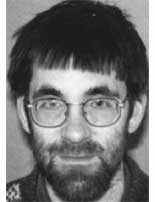Now that the preparation for my undergraduate courses in the first semester is more or less finished, I can begin to think about the courses I’ll give this year in the master class
non-commutative geometry. For a change I’d like to introduce the main ideas and concepts by a very concrete example : Ginzburg’s coadjoint-orbit result for the Calogero-Moser space and its
relation to the classification of one-sided ideals in the first Weyl algebra. Not only will this example give me the opportunity to say things about formally smooth algebras, non-commutative
differential forms and even non-commutative symplectic geometry, but it also involves what some people prefer to call _non-commutative algebraic geometry_ (that is the study of graded Noetherian
rings having excellent homological properties) via the projective space associated to the homogenized Weyl algebra. Besides, I have some affinity with this example.
A long time ago I introduced
the moduli spaces for one-sided ideals in the Weyl algebra in Moduli spaces for right ideals of the Weyl algebra and when I was printing a _very_ preliminary version of Ginzburg’s paper
Non-commutative Symplectic Geometry, Quiver varieties, and Operads (probably because he send a preview to Yuri Berest and I was in contact with him at the time about the moduli spaces) the
idea hit me at the printer that the right way to look at the propblem was to consider the quiver
$\xymatrix{\vtx{} \ar@/^/[rr]^a & & \vtx{} \ar@(u,ur)^x \ar@(d,dr)_y \ar@/^/[ll]^b} $
which eventually led to my paper together with Raf Bocklandt Necklace Lie algebras and noncommutative symplectic geometry.
Apart from this papers I would like to explain the following
papers by illustrating them on the above example : Michail Kapranov Noncommutative geometry based on commutator expansions Maxim Kontsevich and Alex Rosenberg Noncommutative smooth
spaces Yuri Berest and George Wilson Automorphisms and Ideals of the Weyl Algebra Yuri Berest and George Wilson Ideal Classes of the Weyl Algebra and Noncommutative Projective
Geometry Travis Schedler A Hopf algebra quantizing a necklace Lie algebra canonically associated to a quiver and of course the seminal paper by Joachim Cuntz and Daniel Quillen on
quasi-free algebras and their non-commutative differential forms which, unfortunately, in not available online.
I plan to write a series of posts here on all this material but I will be very
happy to get side-tracked by any comments you might have. So please, if you are interested in any of this and want to have more information or explanation do not hesitate to post a comment (only
your name and email is required to do so, you do not have to register and you can even put some latex-code in your post but such a posting will first have to viewed by me to avoid cluttering of
nonsense GIFs in my directories).
 Can
Can